Fasching/Fasnacht, the celebratory parades that take place between November and Lent in Austria and Germany, are broadly translated as carnivals. However, their styles vary greatly from region to region and the traditional ones around Innsbruck definitely show more tendencies towards pagan rituals. In these parades, there are many sophisticated characters symbolizing the transition of the seasons and reflecting old beliefs. This year, as spring starts taking over, I returned to the nearby village of Axams for the Wampelerreiten carnival which gives departing winter a final boot!
Wampelerreiten
“Axamer Wampelerreiten” was granted the status of Intangible Cultural Heritage in 2016 by UNCESO and it is held in full scale (with Großer Fasnachtsumzug) once every four years. If you can’t wait till 2023, Wampelerreiten (without their wagon) can also be seen in action every year on Fat Thursday (Unsinniger Donnerstag) in Axams.
The core characters of this Fasnacht are Wampeler and Tuxer. Of course, there are many more characters and performers enriching the Fasnacht.
The Wampeler
Although chubby Wampeler are so striking and cute at the same time, they are symbols of winter and therefore have to be evicted! Wampe means fat belly and underneath Wampeler’s white linen shirt is firmly stuffed hay. They need this belly and you‘ll see why!
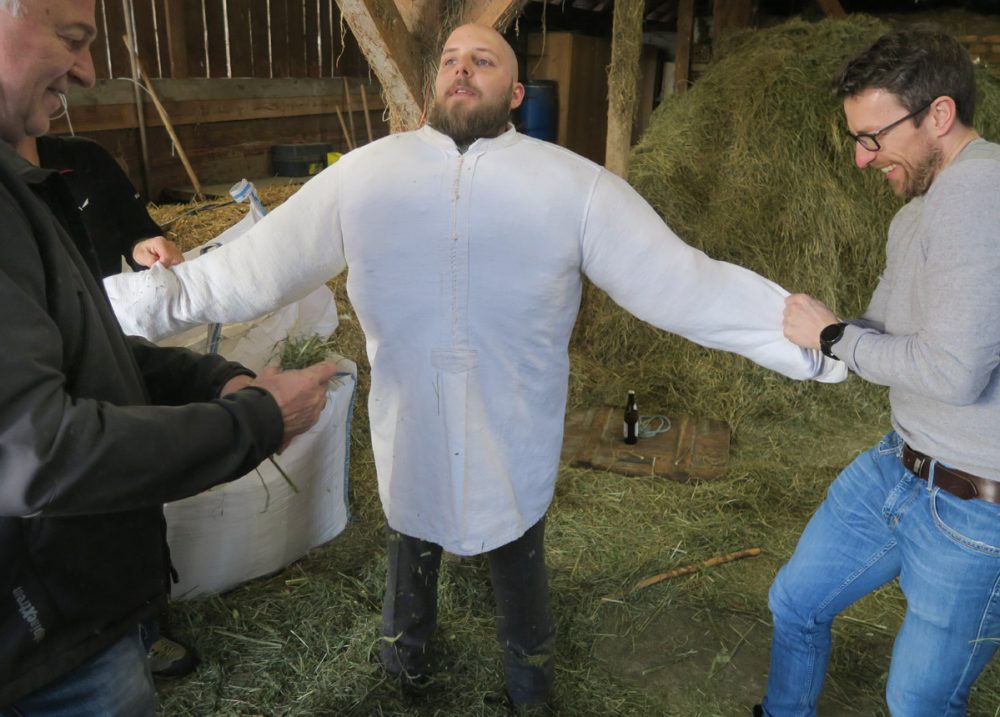
Several people helping each Wampeler getting dressed in an old barn © Ichia Wu
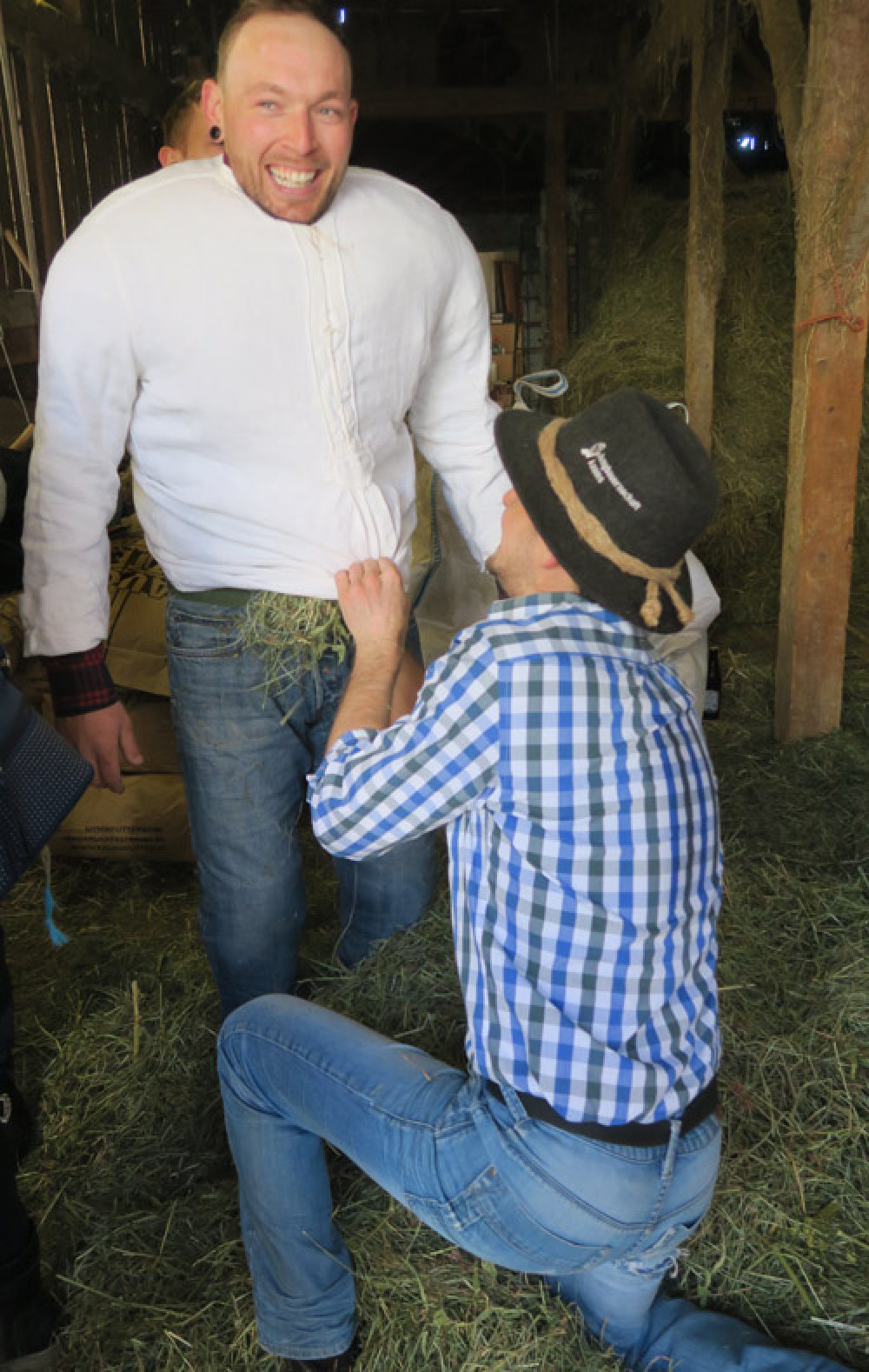
The hay was sorted into small bundles before being stuffed under Wampeler’s linen shirt. © Ichia Wu
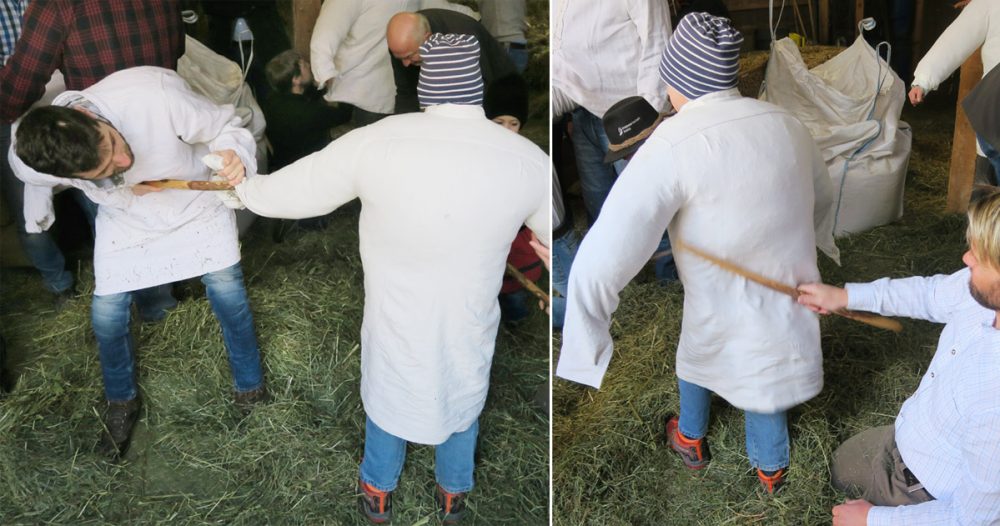
The wood sticks in Wampeler’s hands are not only helpful on the move but also used to stuff and densify the hey between their shirts. © Ichia Wu
“Wampelerreiten” literally means “riding Wampeler” and indeed, there are Riders! They don’t really ride on Wampeler but have to skilfully wrestle them to the ground on their padded back. The Riders are only allowed to strike Wampeler from behind and if Wampeler stand upright against something, the Riders cannot attack them.
Here they come!
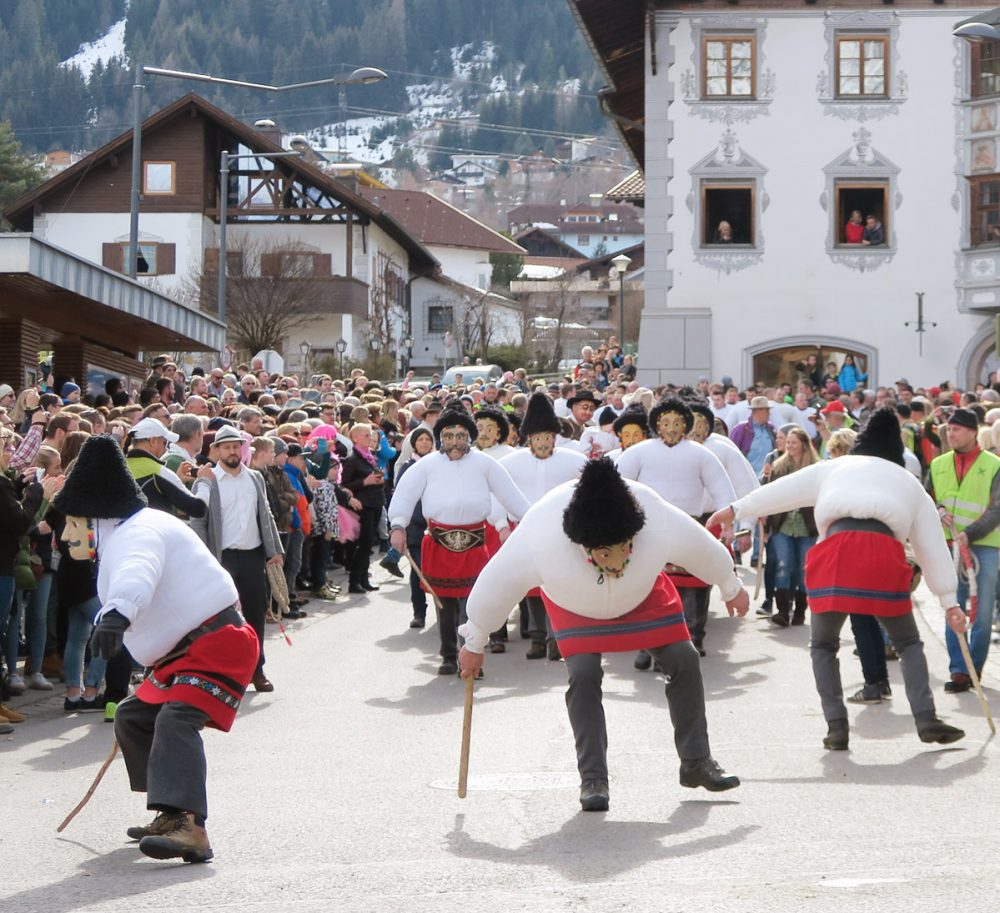
The grand entrance! Masked Wampeler do not get involved in the “riding” as the masks restrict their vision and falling with a mask on is too dangerous in modern environment. © Ichia Wu
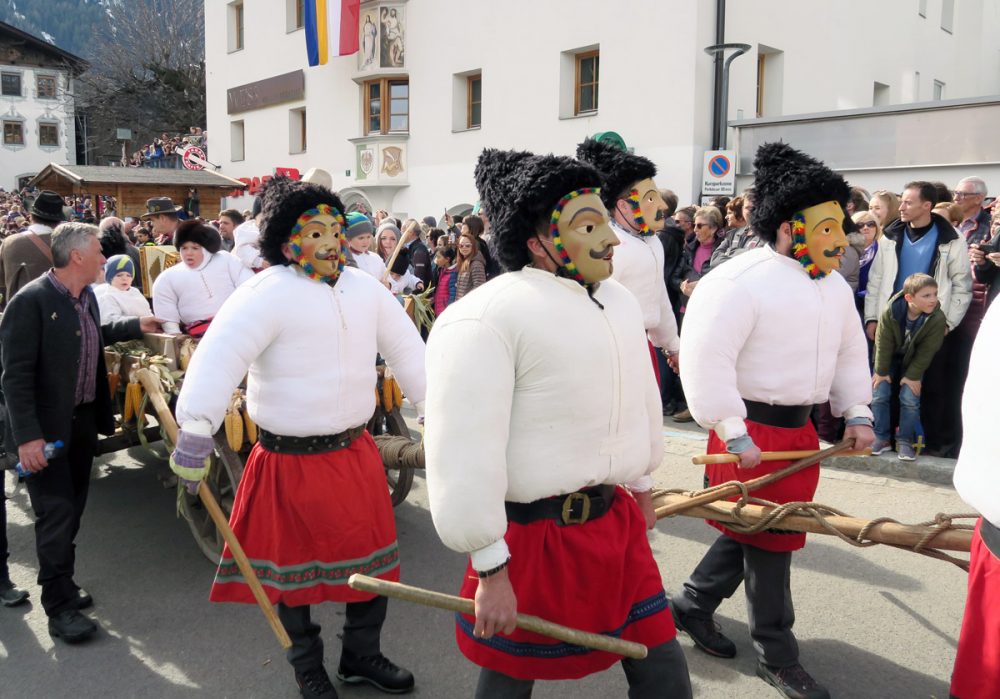
Masked Wampeler pulling a wagon decorated with sweet corns, followed by the unmasked ones who would be “ridden” © Ichia Wu
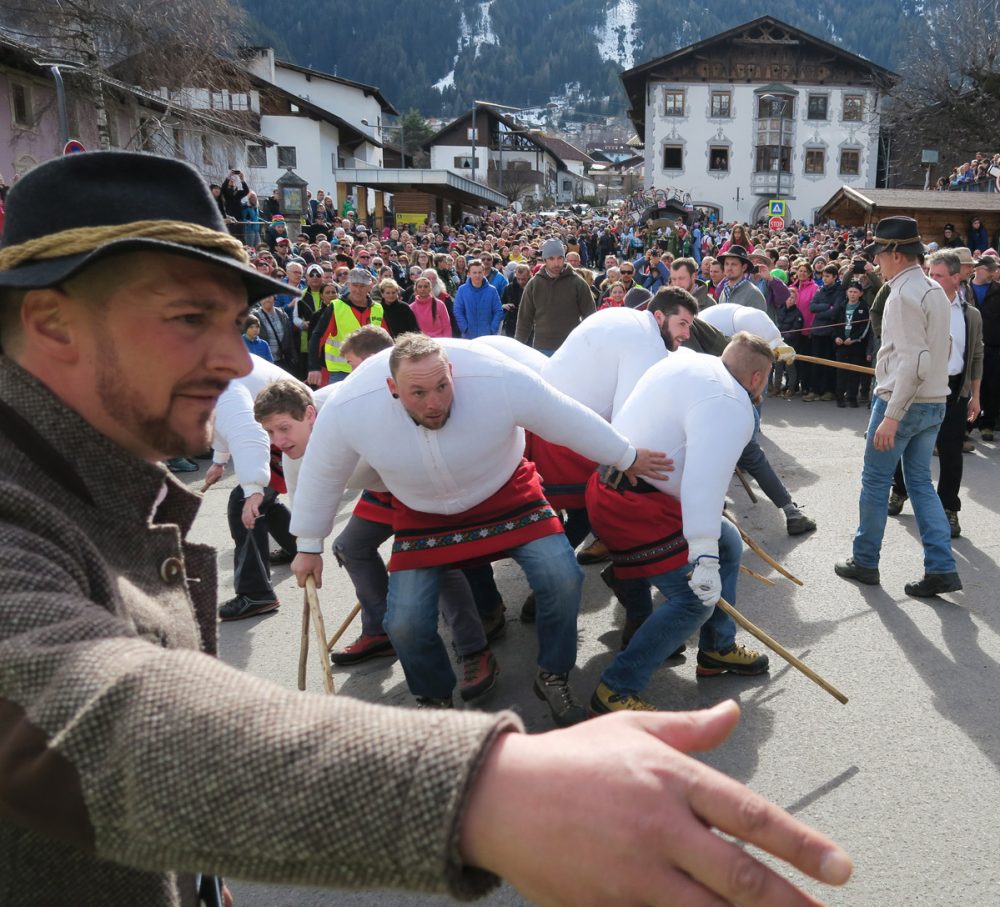
Wampeler aim to dodge the attacks and keep their linen shirt snow white. For the Wampeler, the best strategy of defence is to stand back-to-back. © Ichia Wu
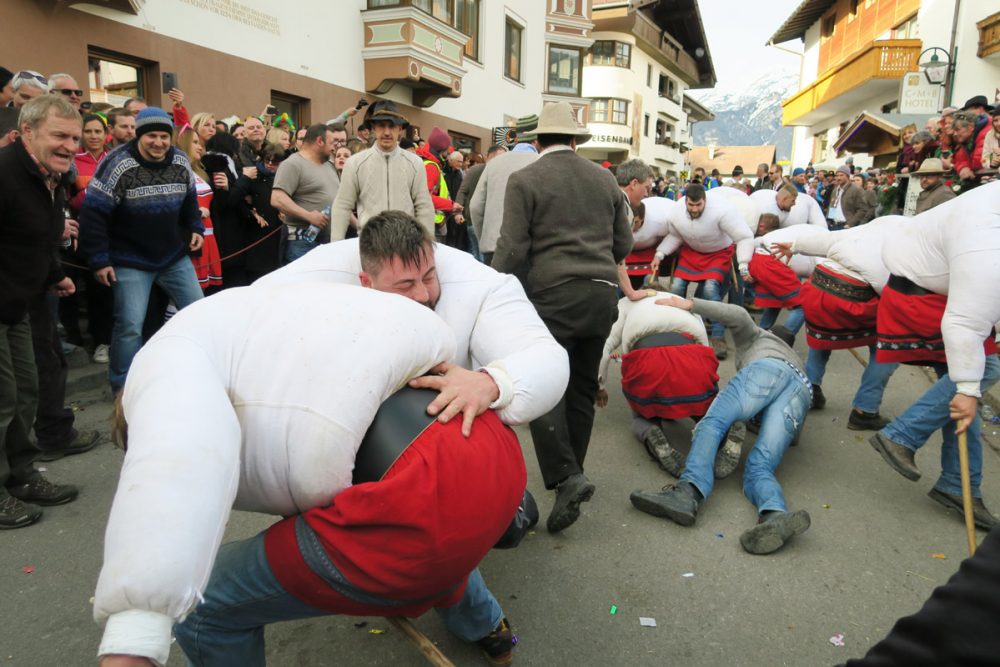
However, their tactical formation could only last so long. © Ichia Wu
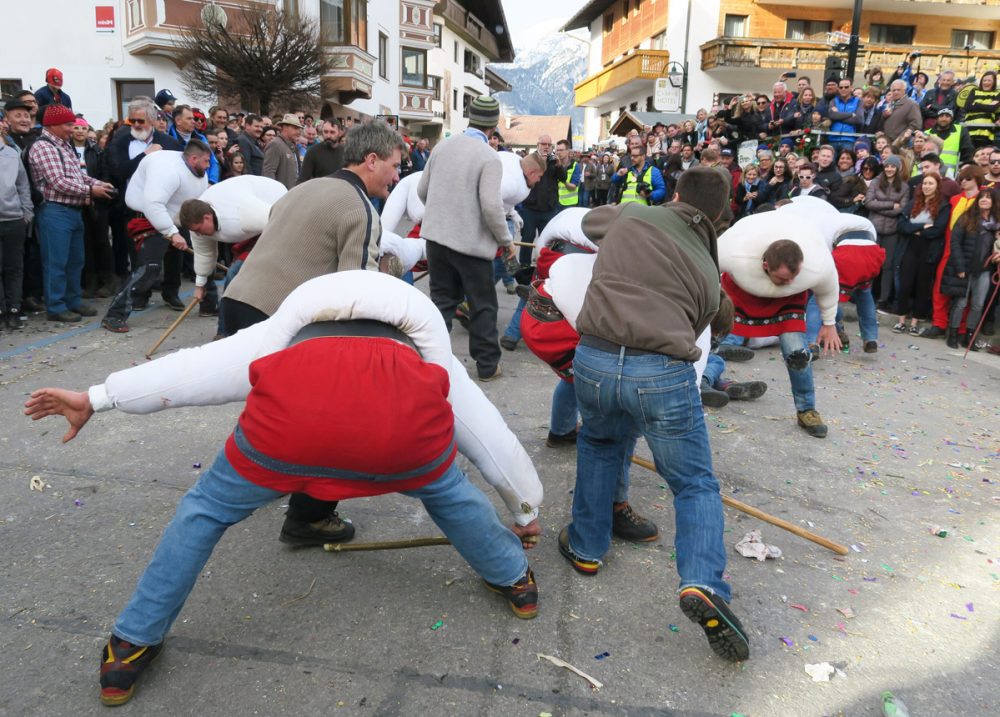
Various Riders started another wave of attack. © Ichia Wu
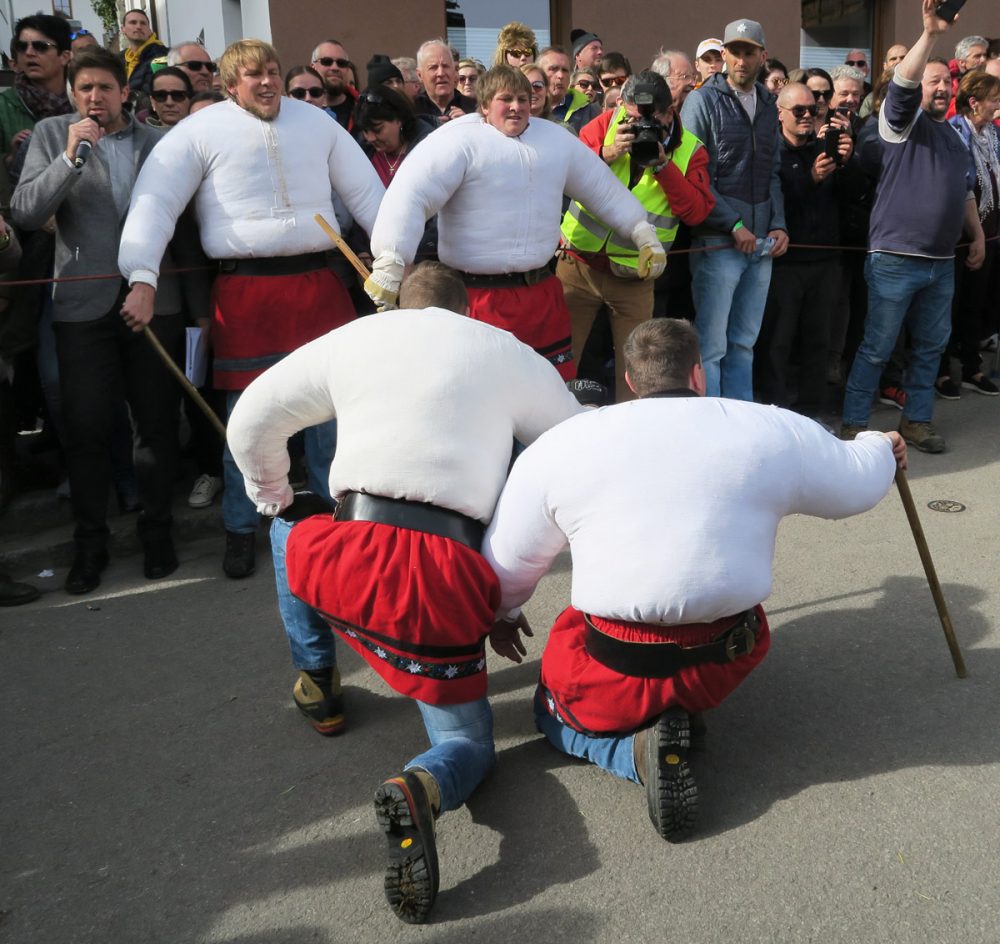
When a Wampeler leans his back against something to catch his breath, the drivers are not allowed to attack him. It’s only fair! © Ichia Wu
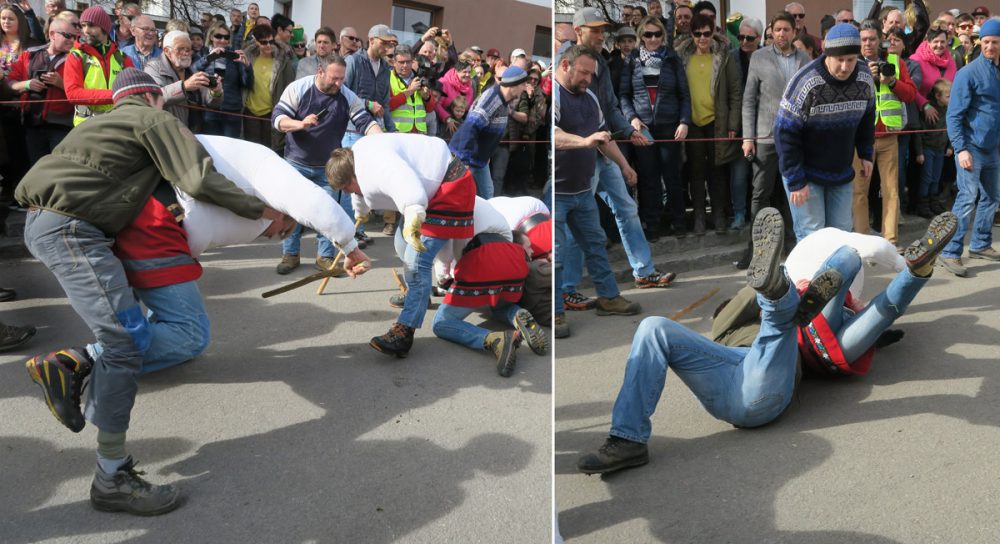
In full swing! The riders seriously wanted winter out of the village! © Ichia Wu
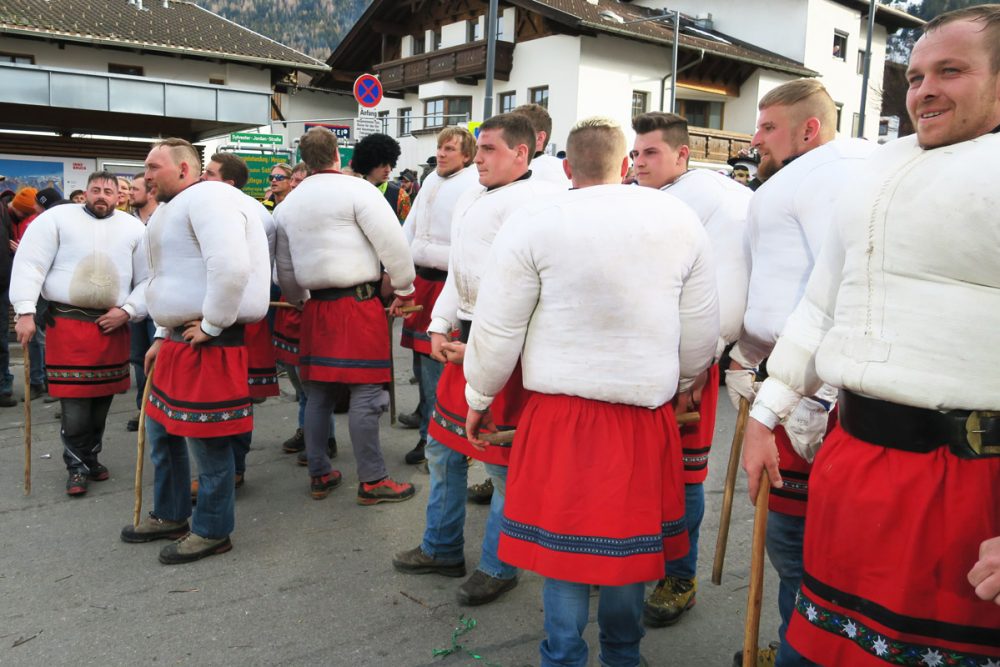
After one round through the village, high-spirited Wampeler were going to make another lap. Some got water poured on them through the neckline as it got too hot inside the heavy costumes. © Ichia Wu
The Tuxer
Tuxer are young men adored for their youth and beauty. As they represent spring, they wear pastel colours, silky fabric and a woman’s hat with flowers, tassels and feathers. They trot forward in small and fast steps while cheering.
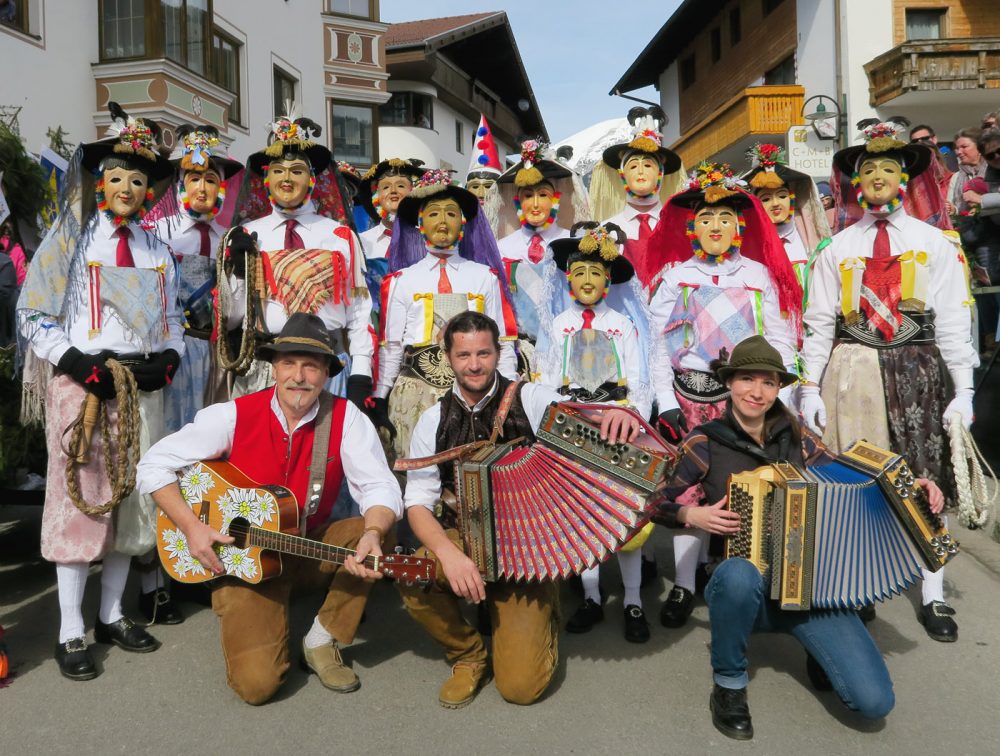
Handsome Tuxer and cheery musicians © Ichia Wu
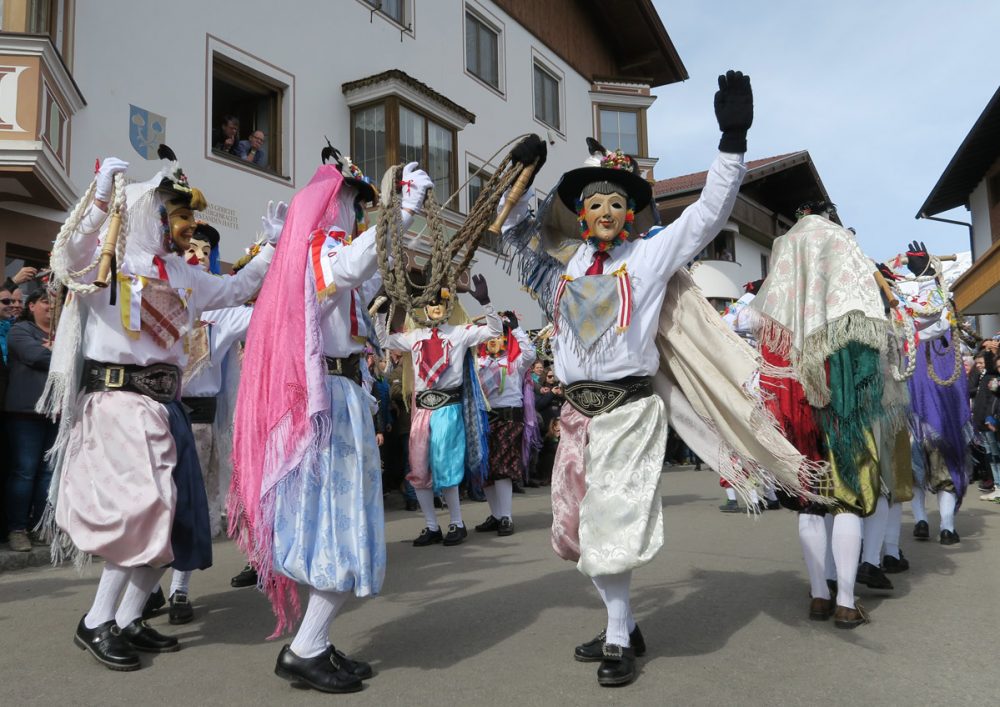
Tuxer’s signature move: scuttering in a line with raised arms © Ichia Wu
The whip (Goaßl) carried by Tuxer has two functions. The first use is for the powerful whipcracking to drive winter away (and make room for the Tuxer; whipcracking is also practiced by other characters and in other villages though.) The second is to scoop ladies from the audience for the Tuxer to share a dance with. I danced with a very tall Tuxer two years ago and although my moves were so clumsy, it was such an amazing experience!
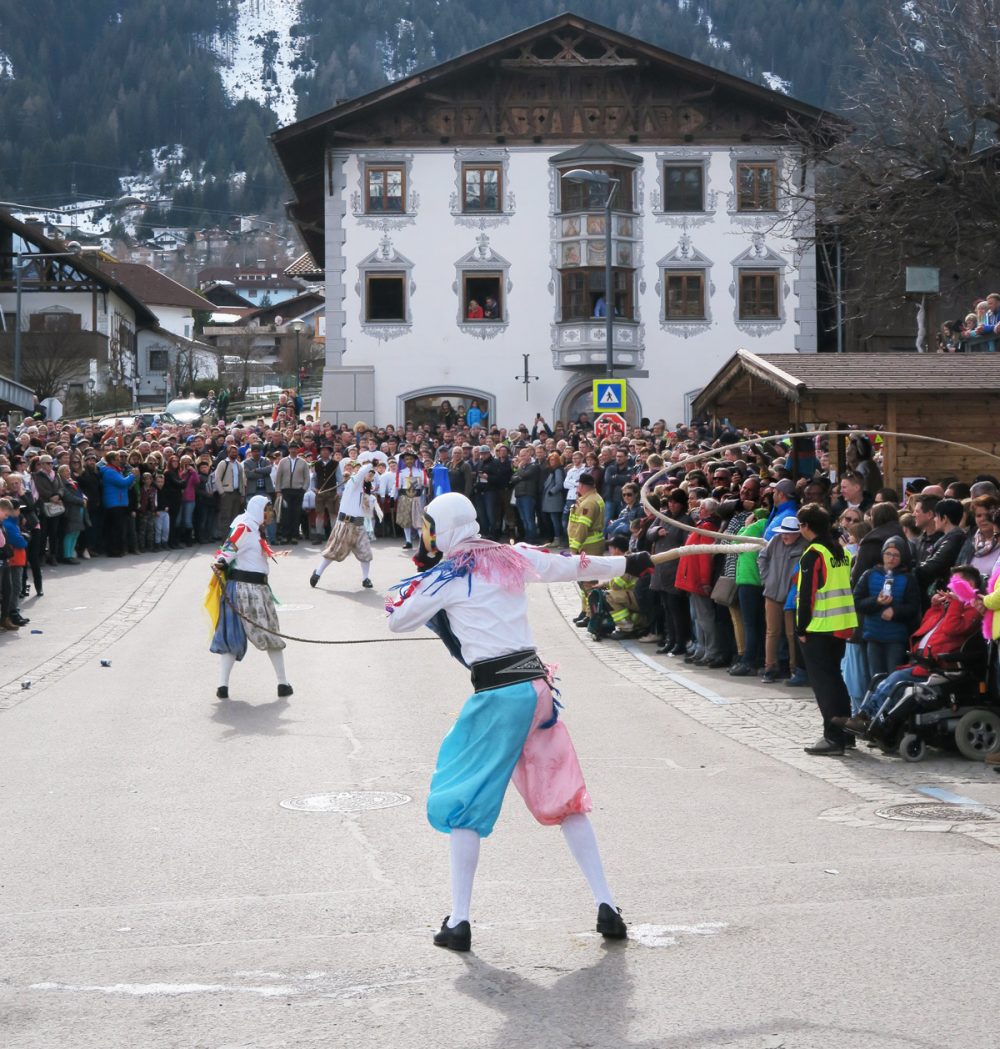
Tuxer performing whipcracking (Goaslschnöllen) © Ichia Wu
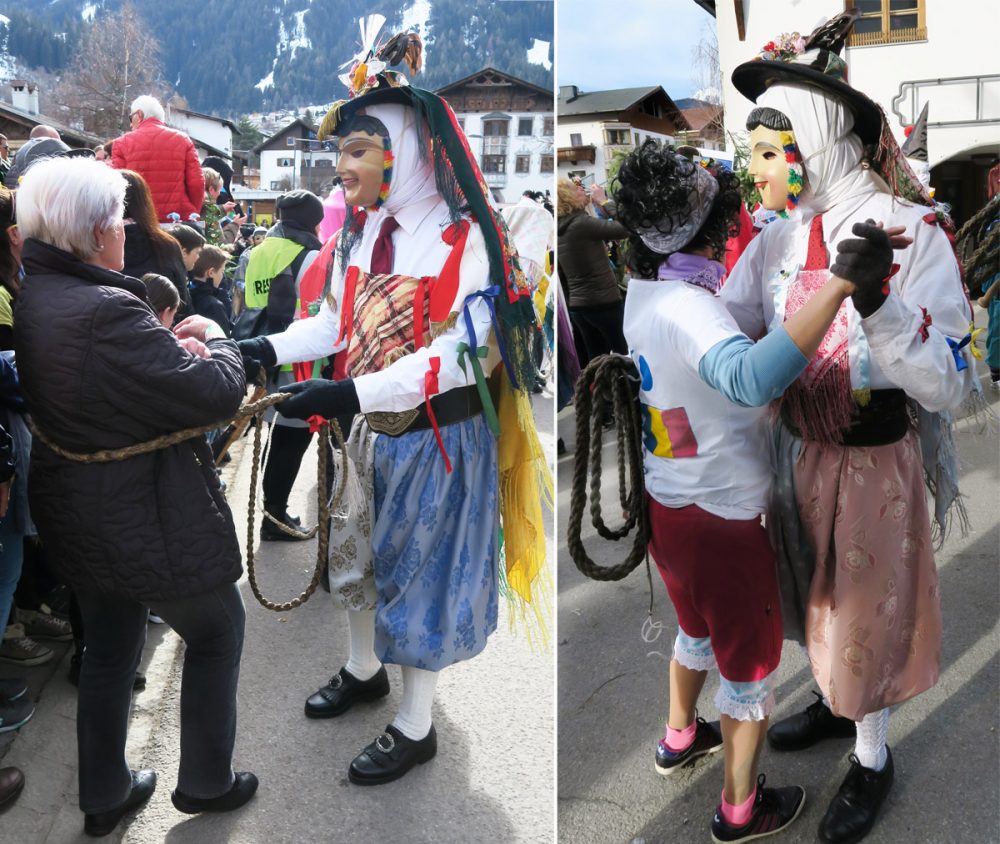
Another important use of the whip: A Tuxer “captured” an audience from the crowd to dance with. © Ichia Wu
The Flitscheler
Unlike male-exclusive Wampeler and Tuxer, Flitscheler are played by female villagers. Accessorized with over 120 dried corn husks, Flitscheler are symbols of a bumper harvest and fertility. The husks were firstly made into knotted bunches before being sewn on inside-out suits. (Another village, Absam, also has this character but the costume design is entirely different.) The little Flitscheler sitting on the float also threw corn kernels over the crowds.
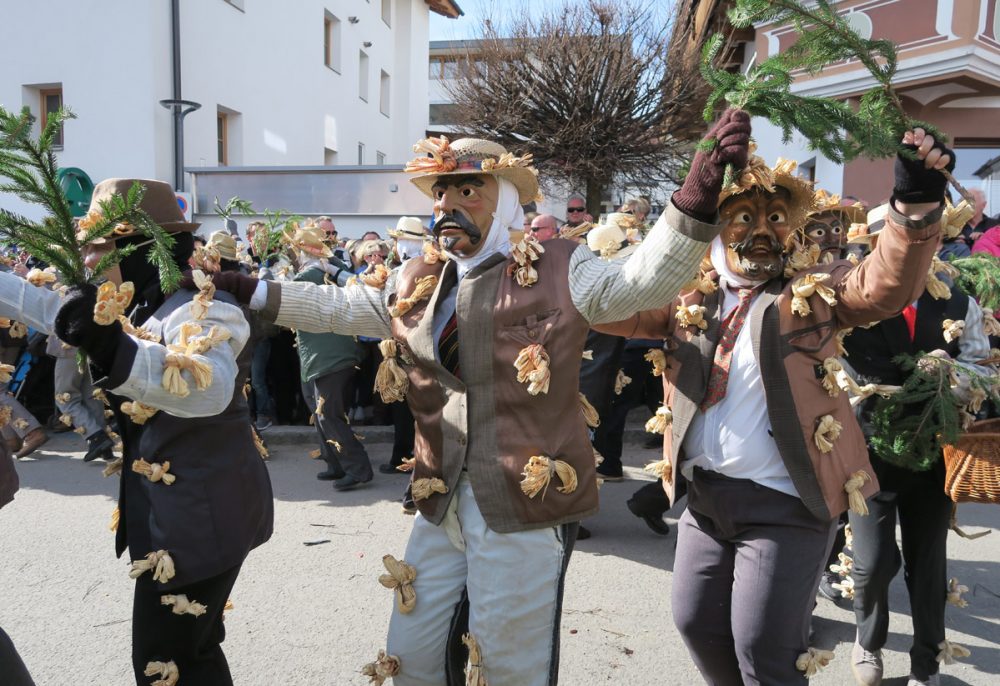
Flitscheler dancing in a line © Ichia Wu
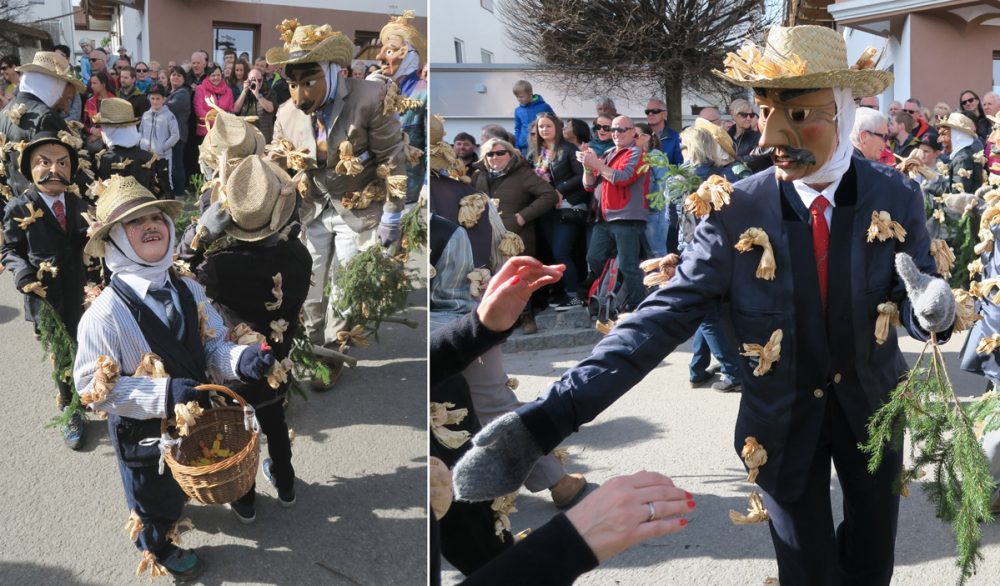
Left: A young Flitscheler handing out candies © Ichia Wu
Dance, dance, and more dance! Dancing with the audience plays a very important role in Axams’ Fasnacht.
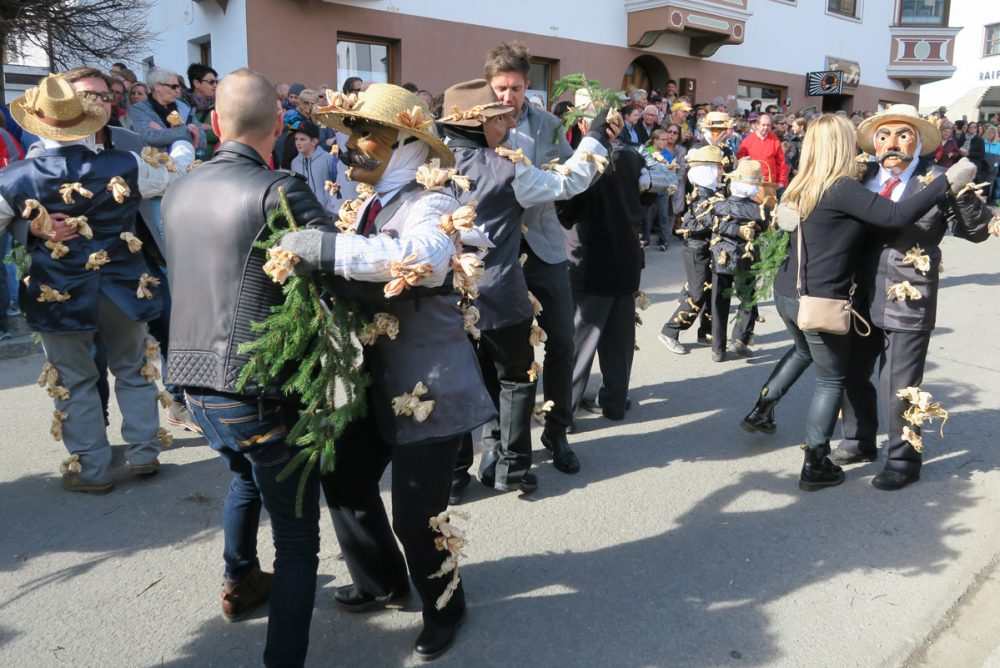
Another brisk Polka with the Flitscheler © Ichia Wu
The Axamer Bock
In terms of the order of appearance, the Axamer Bock (goat) led by Mr. Toni Singer arrived right after the Goaslschnoeller (whipcracker) opening the Fasnacht. As usual, Mr. Singer then recited an 18th-century poem written by Franz Jordan who lived in Axams. This was the ninth Faschnat for Mr. Singer and the Axamer Goat. The Axamer Goat is also the icon of the Fasnacht magazine.
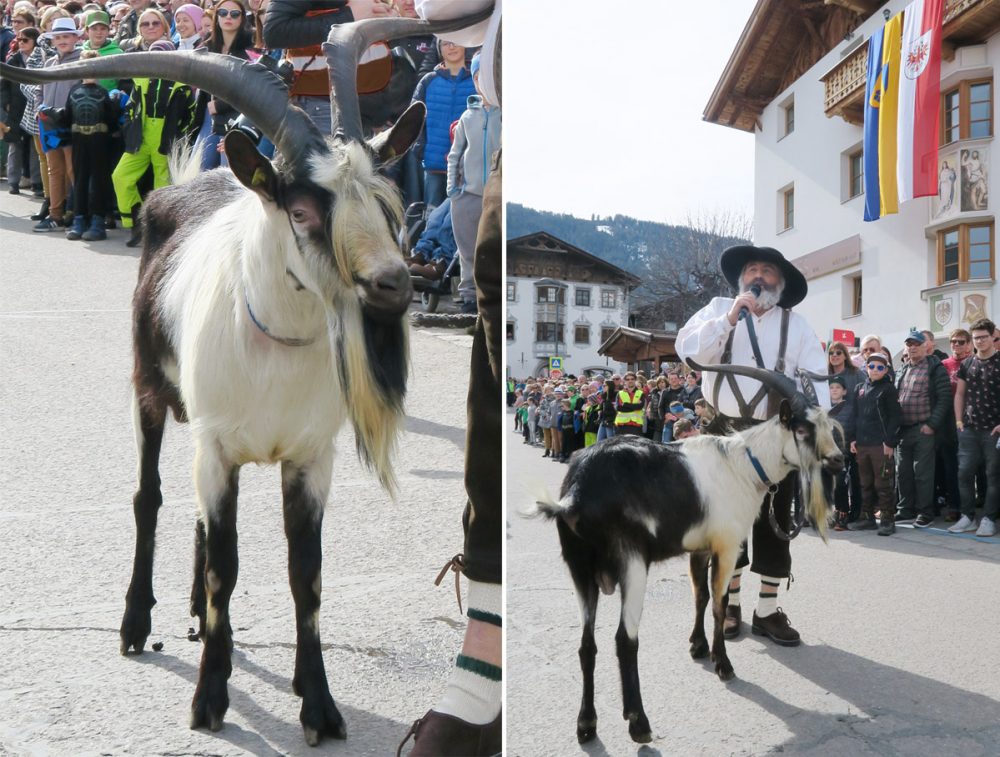
Mr. Toni Singer and the Goat of Axams © Ichia Wu
The Kögele-Hexn
The witches wearing red scarves and aprons are “Kögele-Hexn (witches)”. They came with a float equipped with a full-sized slide and a swing. On the other hand, the witches called Nadln mainly wear black and carry a walking cane instead of a bloom.
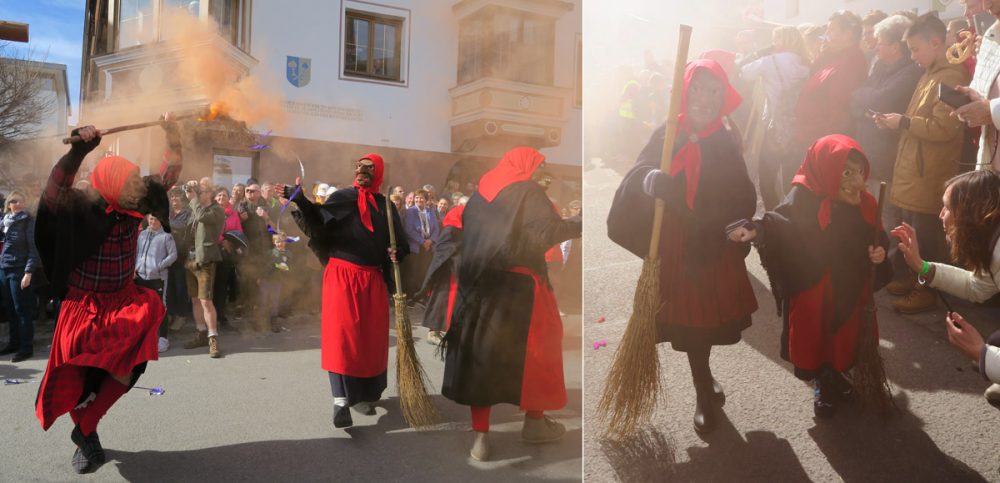
The smoky effect was spooky and cool. © Ichia Wu
The Buijazzln
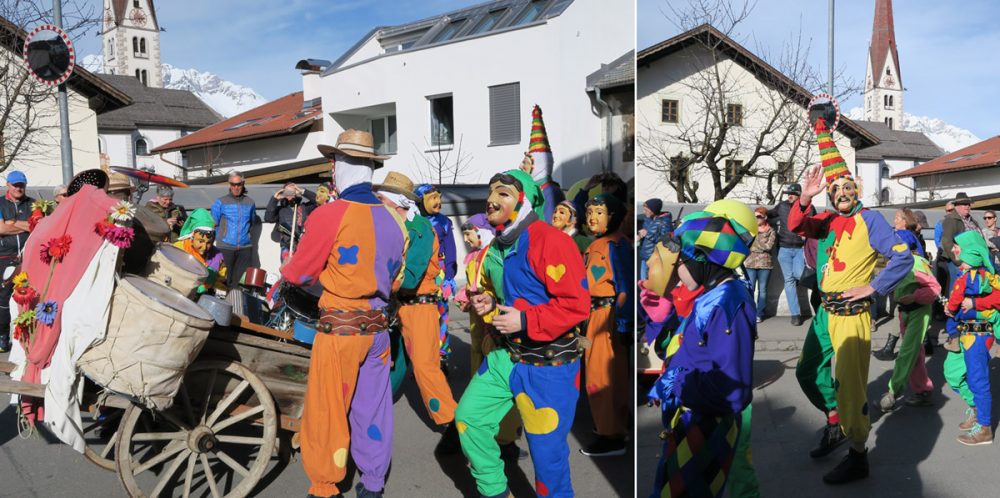
Colourful clowns “Buijazzln” and their drum wagon © Ichia Wu
The Altboarisches Paarl
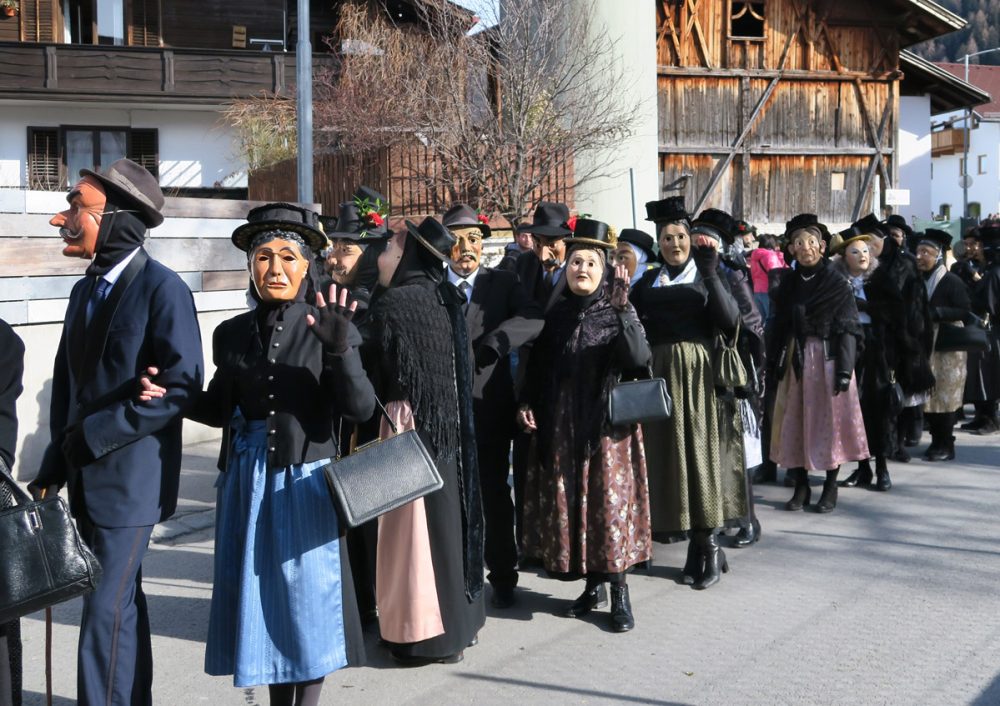
The calm and harmonic Old-Bohemian Couple (Altboarisches Paarl) also danced in pairs. © Ichia Wu
Other Performers
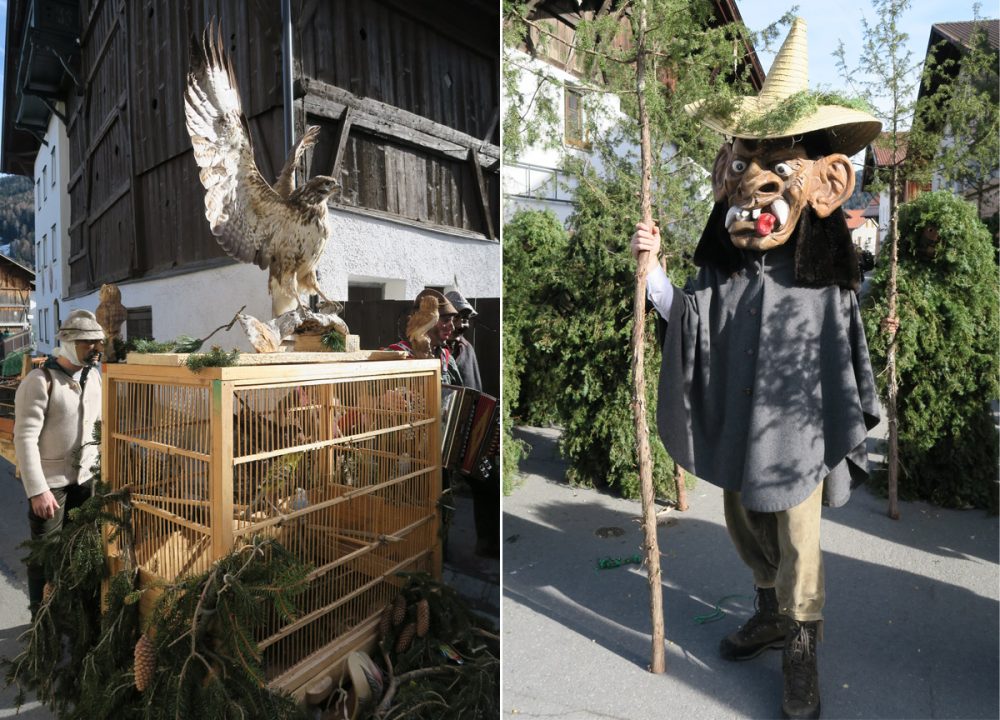
Left: The Vögelfocher and their bird-themed float / Right: The Waldmänner from the forest © Ichia Wu
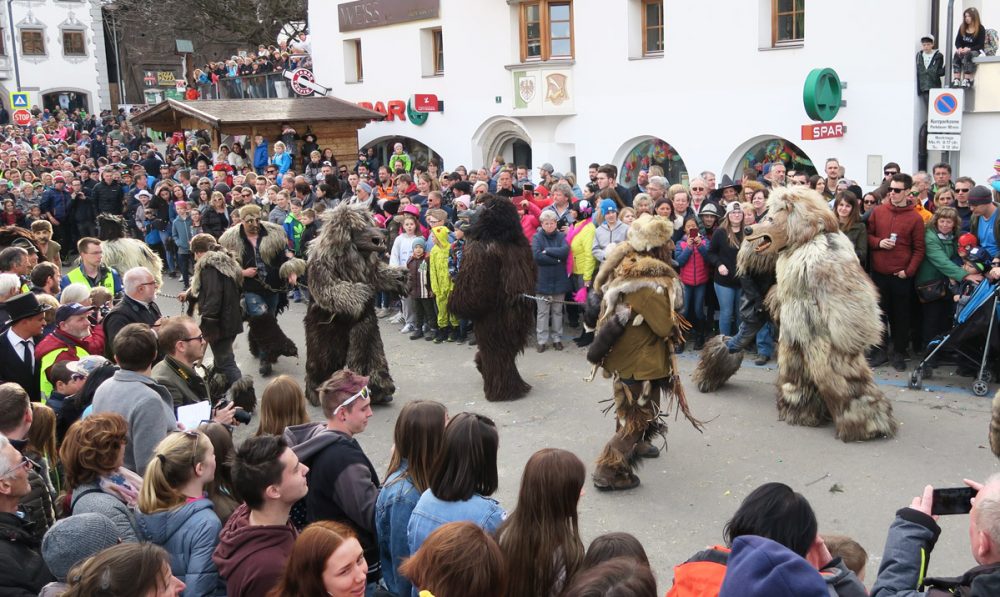
The Axamer Bears and their stirct drivers © Ichia Wu
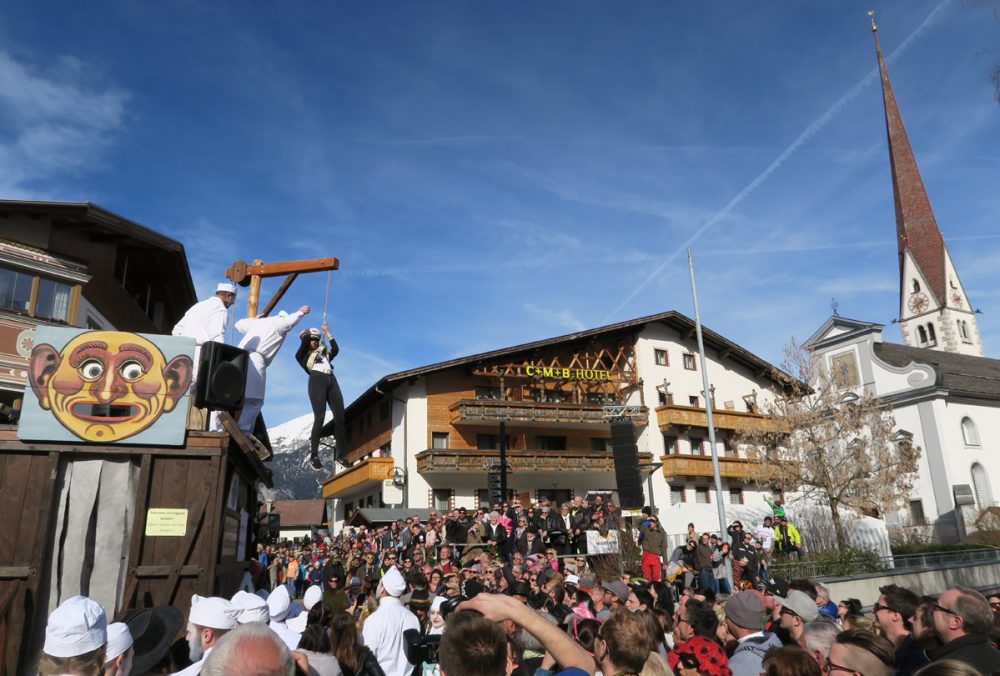
The float “Old Women Mill” (Altweibermühle) ground daring female audience into “young beauties”. © Ichia Wu
Highly Recommended
The Grand Fasnacht with Wampelerreiten in Axams is truly one of a kind and the village is easily accessible by regional bus from Innsbruck. A dance with any of the groups (followed by or in between Schnaps) is especially recommended!
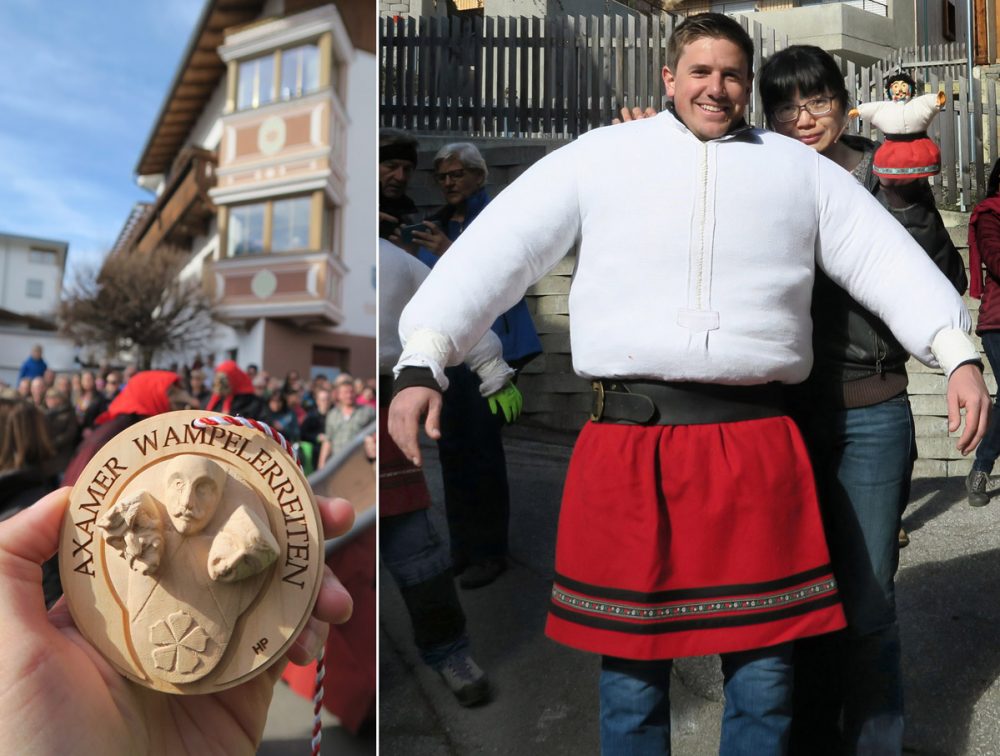
Left: the souvenir I bought, really nice! / Right: I made a Wampeler hand puppet at home and brought it along. I was thrilled by this encounter. Thanks Mr. Wampeler! © Ichia Wu
- The event calendar here will be updated before the next carnival/Fasching/Fasnacht season and it covers many villages around Innsbruck.
- Coming to Innsbruck out of carnival seasons? The Museum of Tyrolean Regional Heritage has a wonderful collection of Fasching/Fasnacht costumes from several villages and is definitely worth a visit.































